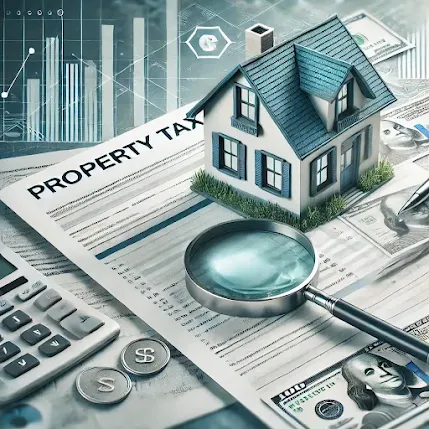What is Property Tax?
The property tax is a mandatory payment made by the land owner or a real estate owner including residential, commercial, industrial and agricultural properties to the Government. The property tax is payable either annually or semi annually to the local government bodies like cooperations or Panchayats. Basically, the amount is based on the property location, current value and the current laws of the respective states.
To maintain the ownership of the asset, the buyers have to pay smaller amount in the form of property tax to the State Government. The property tax is collected for the purpose of development and civic bodies in India.
How property tax works?
The land owner has required to pay the annual sum to the government. The amount of tax is based on the value of the property and it is determined by the municipal corporation or a state government. And regards to this, some respective States assist with subsidies and relaxation to the communities. If the property is owned by female then there would be some discounts for female owners and senior citizen.
How to calculate property tax?
The land owner is mandatory to pay the tax levied by the local body municipality. The tax may vary from one location to another. For instance, property tax rates are likely to be higher in cities like Bengaluru compared to small villages in Karnataka.
Other factors are considered for property tax amount calculation such as
a. Location of the property
b. Size of the property
c. Under construction or ready to move property.
d. Gender of the property. Example discounts for female owners.
e. Age of the property. Example discount for senior citizens.
f. Civic facilities provided by municipal body in a particular locality.
Property tax rate for different property types
1. Residential property: Ideally, residential properties are levied at low rate compared to other property types. In Delhi the property tax rate range from 0.5 % to 3 % of the properties annual value depending on factors like location and property type.
2. Commercial property: Commercial properties is of income generating nature and often attractive to higher tax rates. For example, in Maharashtra the rates range between from 0.652 % to 3.91% of the capital value.
3. Agriculture property: The agriculture properties benefit from lower tax rates or exemption depending on state to state policy. Example in many states, the property tax on agricultural land is exempted to promote farming activities.
4. Industrial property : Factories and Warehouses are taxed Because industrial properties are of income generating nature. Indeed, the tax rate is higher compared to residential properties. Mainly, the Property rates of industrial is conducted by States policies, government regulations, and properties characteristics.
Importance of paying property tax
Property tax is calculated upon the property valuation held by municipal bodies regularly. Hence the owner of the property is liable to pay tax where he lives or uses the accomodation. In case of dispute, the property tax receipt a plays important role in showing the owner, title of the property. Consequently, property tax receipt shows the appropriate receipt of acclaimed buyers and keep records updated.
During the registration of property the owner has submit required documents to prove the owners of the property such as sale deed copy, clearance from the society, dully filed application, photos, address, proof and copy of last receipt of property tax.
Whenever you buy house loans, property tax receipts are taken in key consideration for determining the owner of the property to provide loan against the property.
Being the land owner of the property you must keep the timely property tax payment receipts and keep the record updated in local municipal bodies. Regularly pay the property tax by visiting the municipal local authorities either offline or online.
Methods to calculate property tax
1. Capital value system: Taxes levied on each parcel of land on assessed value. Generally, the assessors with motive to make assessment views criteria like land improvements, building countour, or local area benefits.
2. Unit Area Value System: The property tax valuation is based upon the build up area per unit price. Properties location usage and land price is multiplied by the build up area of the property to determine the correct tax valuation.
3. Annual rental value system: Tax is based on properties annual rental value and it has no effect on the rent been collected on monthly basis.
Let's simply the process of calcuting property tax through example.
Property Tax Bengaluru
The Bengaluru municipal bodies follow Unit Area Value System
Property tax (K) = (G - I) x 20 %
Where, G = X+Y+Z and I = G x H/100
(G = gross unit area value; X = tenanted area of property x per sq ft rate of property x 10 months;
Y= self occupied area of property x Per sq ft rate of property x 10 months; Z = Vehicle parking area x Per sq ft rate of vehicle parking area x 10 months; H = percentage of depreciation rate i.e. age of property).
Property Tax Delhi
Delhi municipal corporation follows the unit area system to calculate property tax. The formula used for calculation is
Property tax = Annual value x Rate of tax
(Annual value= Unit area value per square metre x unit area of property x Age factor x Use factor x structure factor x occupancy factor).





No comments:
Post a Comment